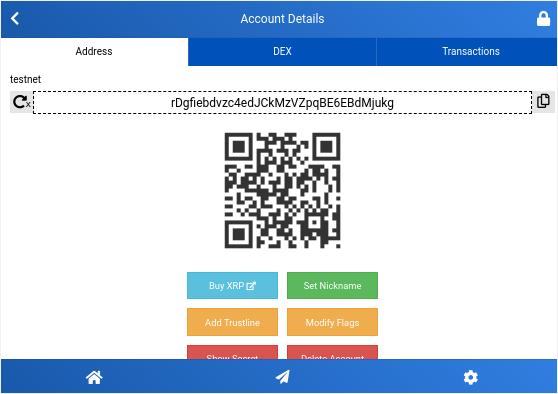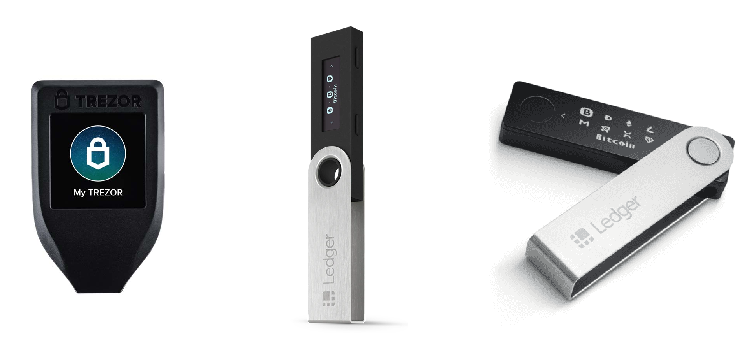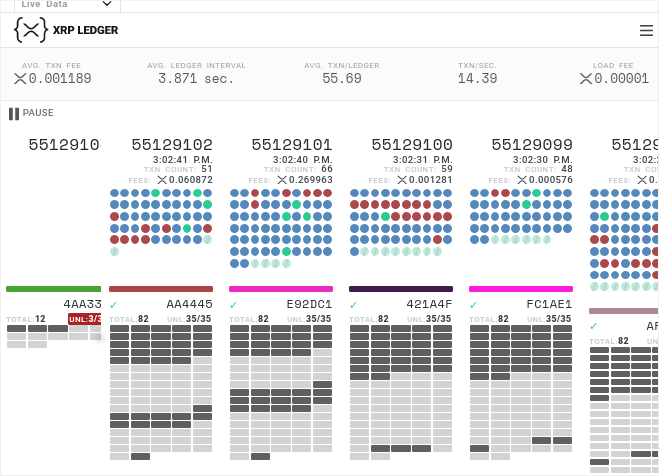How to Use XRP: Using Ripple's Token for Beginners
XRP is best known as the cryptocurrency for banks and financial institutions, but anyone can use it for fast and cheap transactions.

Key Takeaways
- Ripple's XRP is the third largest cryptocurrency by market capitalization
- Using the XRP blockchain offers fast transactions and low fees
- As a top-three coin, XRP is widely supported by merchants and exchanges
Share this article
XRP is the native cryptocurrency of the XRP Ledger, a blockchain created by Ripple. Though XRP is aimed at financial institutions, general investors can also take advantage of low fees and fast transaction speeds. Here’s how.
Buying the XRP Token
First, to obtain XRP, it’s necessary to go through a cryptocurrency exchange.
Popular exchanges with XRP/USD trading pairs include Binance.US, Bitfinex, Bitstamp, Coinbase Pro, and Kraken. These are good options for buying the cryptocurrency with a credit card or bank transfer. Coinbase’s retail exchange and Bitbox do not offer the coin.
Buying XRP with Bitcoin, however, opens up many other options. Because the token is a top-three cryptocurrency by market capitalization, virtually all major exchanges have at least one trading pair against XRP.
Choosing a Wallet

To store and use any kind of cryptocurrency it is necessary to use a wallet. Though there is no official XRP wallet there are a few options to choose from:
- Toast Wallet: A free and popular XRP wallet for desktop, mobile, or Chrome browsers. It has no transaction fees.
- Exarpy: Another free wallet that runs in through a web browser. It charges a fee of 0.0025 XRP per transaction.
- Gatehub: An XRP wallet for web browsers that requires sign-up. It charges a 0.2% fee on transfers. It offers exchange and conversion features, which may have associated fees.
- Ripplerm: A technical XRP wallet. It may be useful for users who experience issues with other wallets, or those who need to further customize transaction details.
- Bithomp: Another fairly technical wallet.
We recommend Toast Wallet because it is free, easy to use, and gives users complete control of their funds. Setup instructions are available here.
Though most wallets have low transaction fees, addresses require an initial activation deposit of 20 XRP, about $4 at current prices. The initial deposit is locked up with the address. Those who store their tokens on cryptocurrency exchanges may be able to avoid this initial deposit.
Hardware Wallets
A hardware wallet is a good option for investors who plan to store their cryptocurrency for the long term. Trezor and Ledger are two of the most popular hardware wallet providers that support the cryptocurrency.
These hardware wallets come with an official app that will, upon activation, allow users to send and receive XRP. It is safer to keep cryptocurrency in a hardware wallet for “cold storage” and then send it to a software wallet for general spending as a “hot wallet.” This mitigates the risk of loss from hacking.
Those who plan to actively use or invest their coins, however, should also learn how to identify scams—no amount of secure hardware will protect people from scam offers that take advantage of human error.
Block Explorers
Block explorers allow users to browse the XRP blockchain. Every “block” on the ledger contains data about transactions and accounts.

There are several block explorers to choose from:
- XRPL Explorer: A block explorer from XRP Ledger that features live network data, such as visualized block confirmations, plus data on transaction fees and transaction speeds.
- XRP Scan: A more traditional block explorer, with block confirmations in table format.
- Bithomp: A block explorer that only allows lookups that is integrated with Bithomp’s wallet.
- Blockchair: A popular block explorer that also supports many other coins.
Most wallets keep records of token transactions and also display statuses for pending transactions. Most users will not need to use a block explorer regularly if they use a software wallet. Though, block explorers do give people access to network-wide statistics that can help with assessing the health of the overall network.
Earning XRP
Ripple does not have a built-in way for general users to earn XRP. Ripple is a pre-mined coin, with Ripple owning about half of all tokens.
Furthermore, the XRP Ledger does not have anything like Bitcoin mining. Instead, it relies on different consensus rules that take advantage of volunteer node operators. It is possible to earn XRP from transaction fees by serving as a node on the network, but this is not practical for most users, and the cost of operating a node tends to outweigh the revenue from fees.
The simplest way to earn the coin is to use a site that gives it away. Coil allows bloggers and content creators to earn rewards, which users can cash out in XRP via Gatehub.
For those who are active on social media, it is possible to earn coins from the XRP Tip Bot. This service allows users to tip each other on Twitter, Discord, and Reddit. Potential recipients do not necessarily need to wait for a tip; it is possible to request tips from sites like XRP Arcade, as explained here.
Finally, people can stake their coins with Crypto.com or Celsius Network to earn interest. However, this requires a pre-existing investment and many of these services have a minimum lock-up time for earning interest.
Spending XRP
Though it is not as widely accepted as Bitcoin, there are several consumer services and merchants that accept XRP.
Crypto database Cryptwerk suggests that over 800 different services accept the token at the moment, about 500 of which are considered “merchants.” Although this list is not necessarily complete, it does show that some businesses are accepting the token in practice.
Right now, to spend XRP it is necessary to use an app or payment card that converts token holdings to cash at point of purchase. This will allow for the use of the token at virtually any location. Wirex, Revolut, Uphold, and Coinbase Card all support XRP.
Merchants looking to accept XRP can use a payment processor such as BitPay or Coingate. Developers who want a more versatile option can use Xpring and Interledger.
Practicing With Testnet Funds
Xpring offers a free testnet wallet and unlimited testnet funds, which allows users to test how moving XRP works. Testnet coins work much like live XRP. Practicing ahead of time can help prepare users for issues that may come up, reducing the chance of a costly mistake, like sending funds using the wrong format or entering an incorrect address.
One word of caution, do not attempt to send testnet coins to a real wallet address and do not attempt to send real XRP to the Xpring testnet wallet. Doing so could result in a loss of funds.
Using XRP in Review
Although XRP is designed for interbank settlements, regular cryptocurrency users may find it convenient to use for payments.
Advantages include:
- Several established cryptocurrency exchanges to buy from
- Fast transactions and low fees compared to Bitcoin and Ethereum
- More software wallets compared to other smaller altcoins
- Fairly widespread commercial support by merchants
Disadvantages include:
- 20 XRP deposit fees for new addresses
- No official or standard wallet and fewer reliable choices
- Obtaining coins is not always straightforward
In all, compared to Bitcoin or Ethereum, it looks like there are fewer mainstream options for using XRP for general transactions. Nevertheless, the convenience of low fees and fast settlement could make XRP Ledger well worth learning.
Share this article
